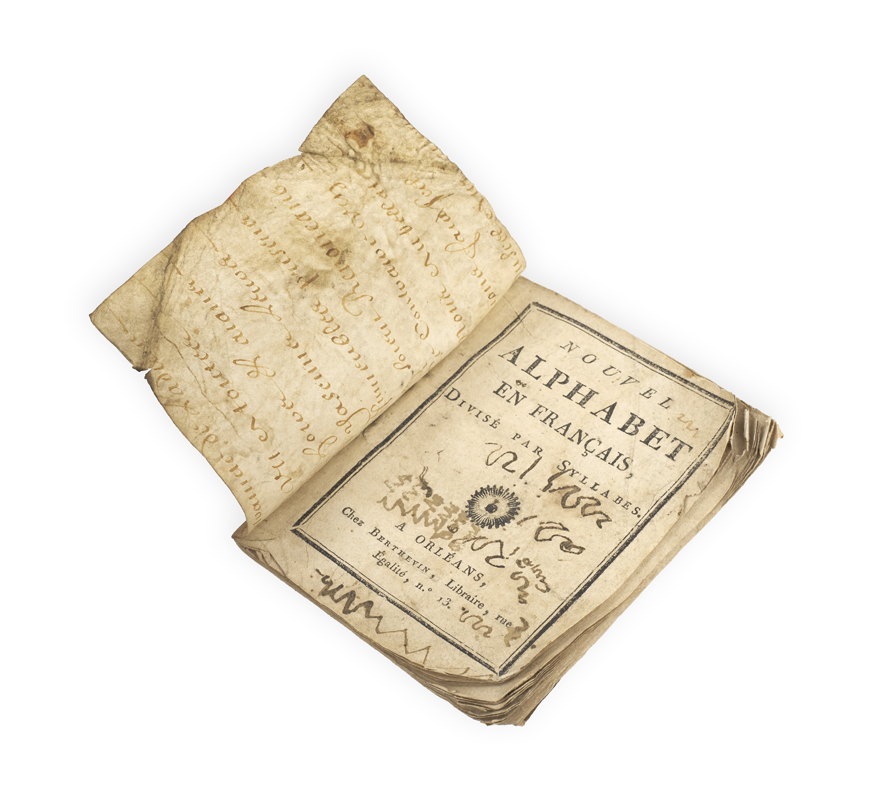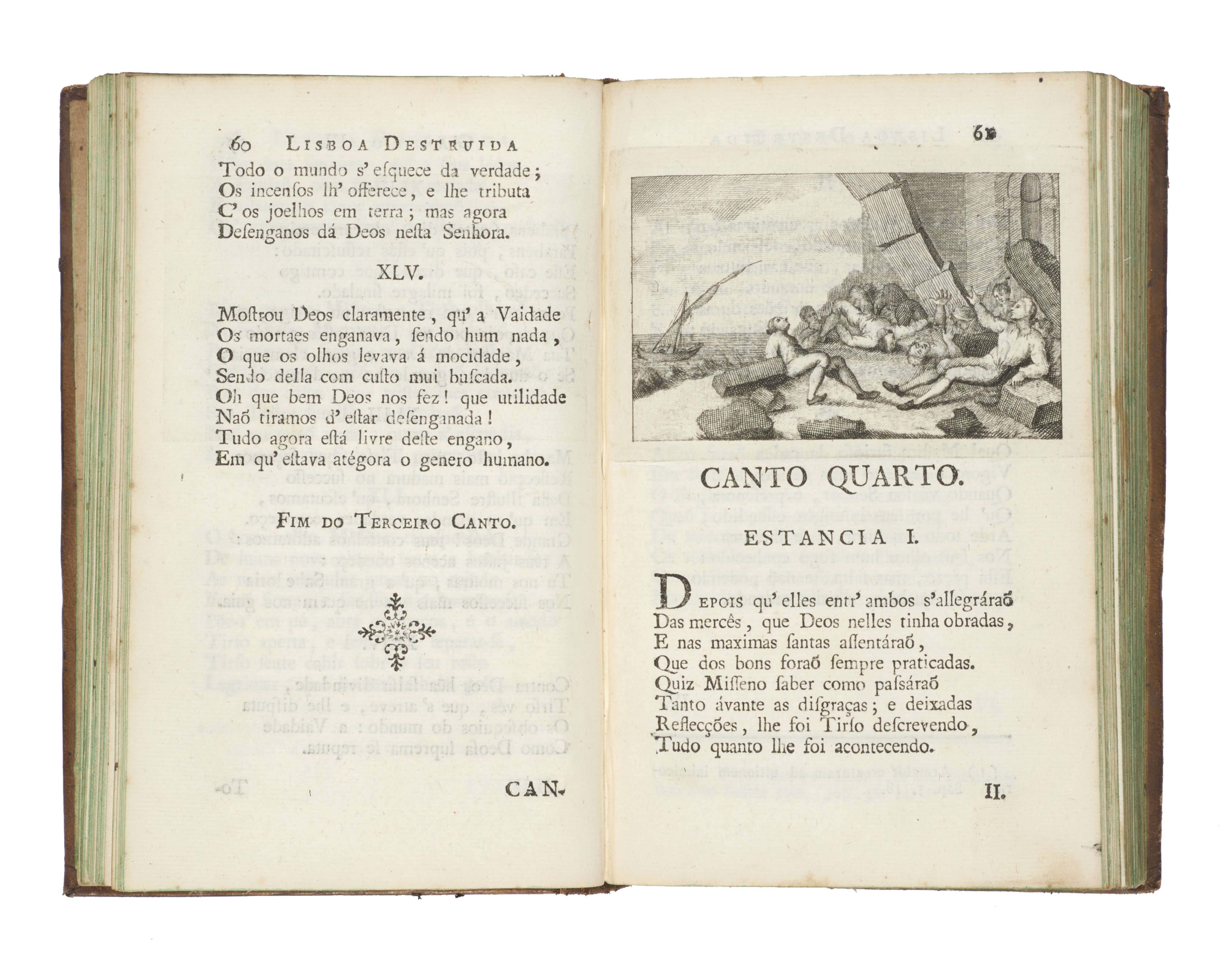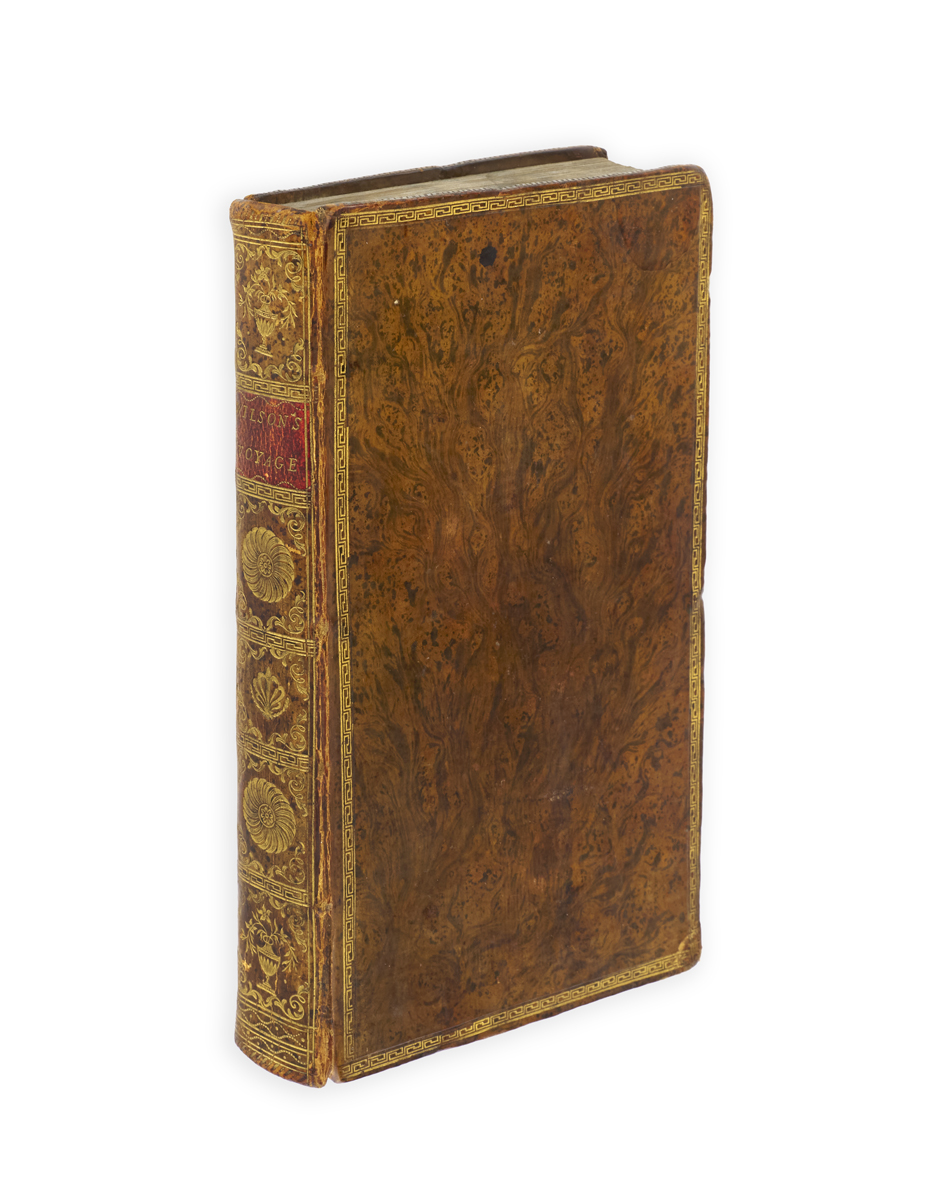
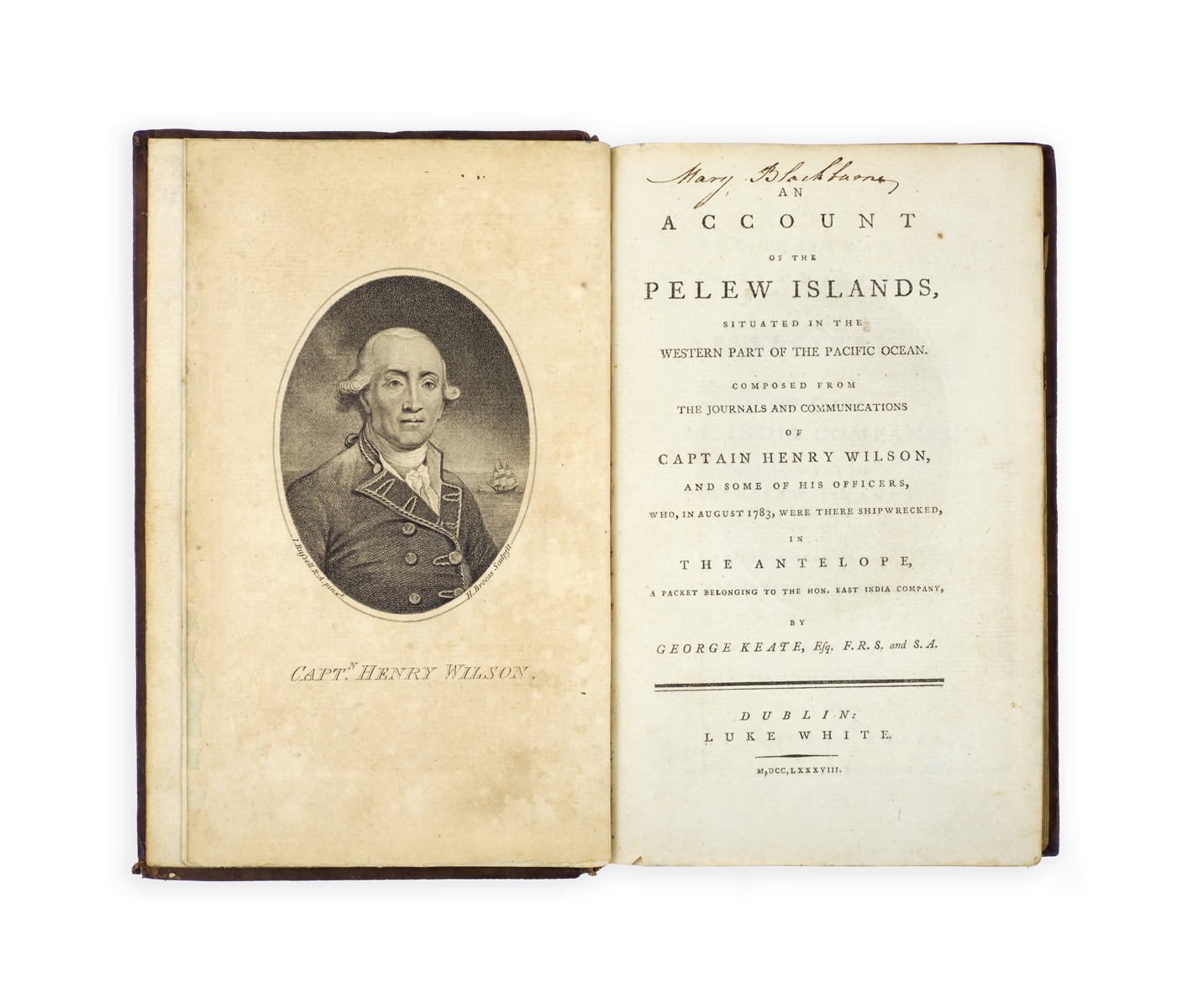

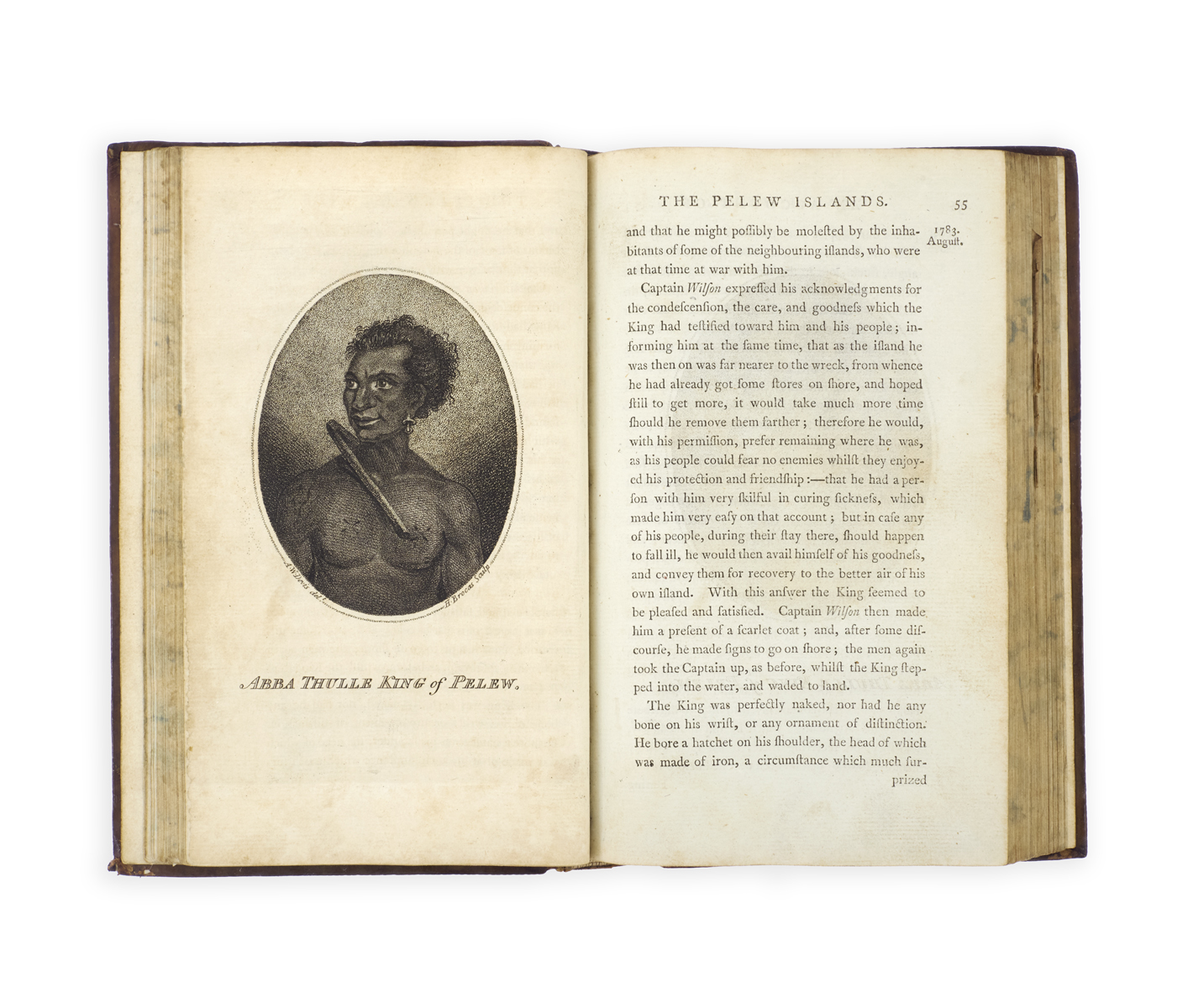
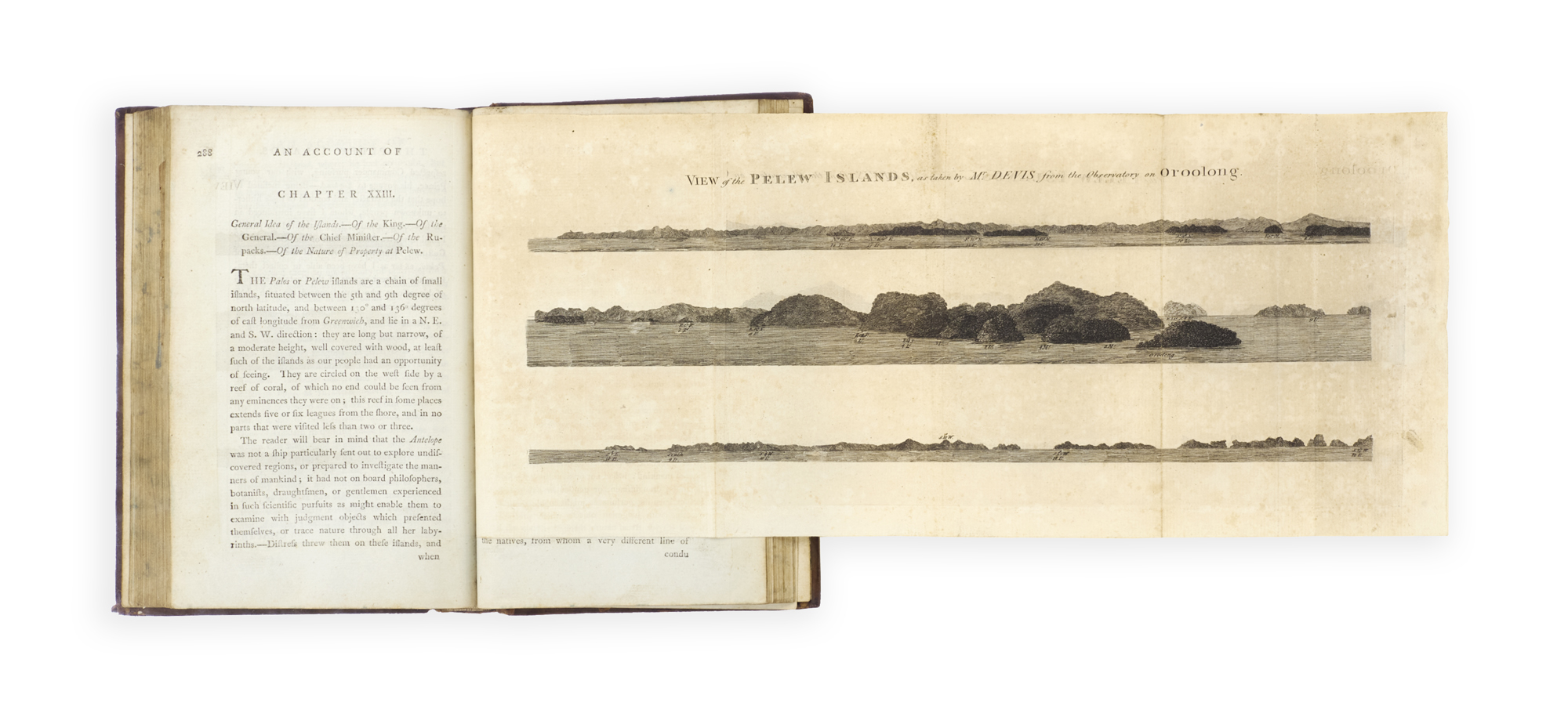
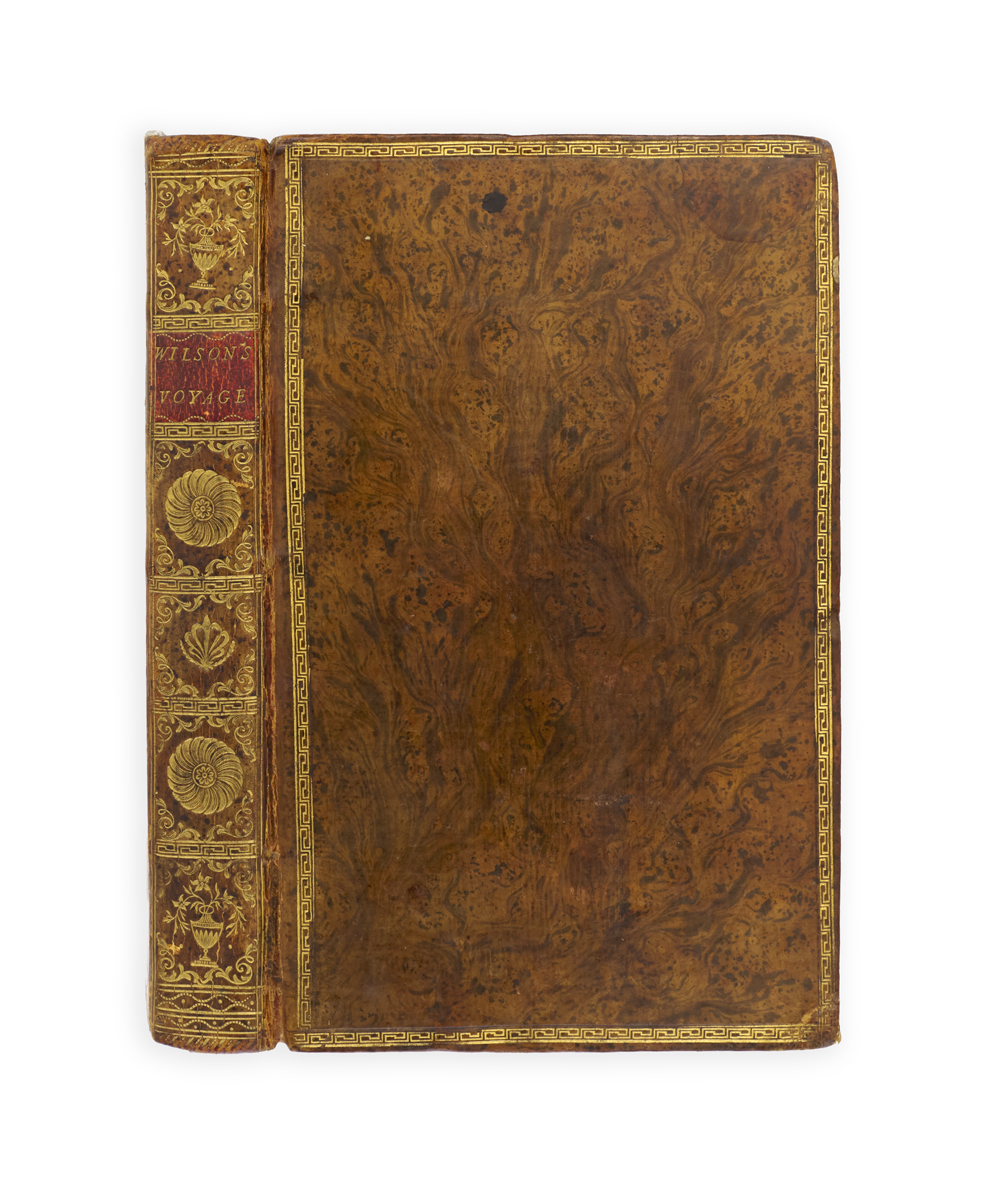
KEATE, George.
An Account of the Pelew Islands, situated in the western part of the Pacific Ocean: composed from the journals and communications of Captain Henry Wilson, and some of his officers, who, in August 1783, were there shipwrecked, in the Antelope, a packet belonging to the Hon. East India Company.
Dublin, Luke White, 1788.
8vo, pp. xxix, [1 (‘Directions to the Binder’), 378, with a stipple-engraved frontispiece portrait, 15 plates (one folding, several with tissue guards), and a large folding map; occasional spots, offsetting from plates, but a very good copy; in contemporary marbled calf, with borders roll-tooled with gilt Greek key motif, spine gilt in compartments with gilt-lettered red morocco label, marbled endpapers; boards a little rubbed, corners lightly bumped; contemporary ink ownership inscription ‘Mary Blackburne’ to title and to p. 100.

Added to your basket:
An Account of the Pelew Islands, situated in the western part of the Pacific Ocean: composed from the journals and communications of Captain Henry Wilson, and some of his officers, who, in August 1783, were there shipwrecked, in the Antelope, a packet belonging to the Hon. East India Company.
First Dublin edition of this popular work, first published in London earlier the same year, by the virtuoso George Keate, member of the Royal Society and Society of Antiquities (1729−1797).
‘In 1783 the Antelope, commanded by Captain Henry Wilson, was wrecked on a reef near one of the Palau (Pelew) Islands, a previously unexplored group. The entire crew managed to get safely ashore, where they were well treated by the natives and eventually managed to build a small vessel from the wreck, in which they reached Macao. They took Prince Lee Boo, one of King Abba Thulle’s sons with them to England, where he made a very good impression. Unhappily, in spite of all precautions, he soon died of smallpox. George Keate was the author of numerous books of poetry, history, and letters, who counted Captain Wilson as well as Voltaire among his friends. He composed this relation from the journals and communications of Captain Wilson and some of his officers. The Account … was extremely popular, and in 1788 and 1789 four editions were printed in London. There were numerous other English and foreign language editions’ (Hill, p. 321).
In writing his Account, Keate sought to be ‘the instrument of introducing to the world a new people;− and a far greater one, in having the means in my power, of vindicating their injured characters … these unknown natives of Pelew, so far from disgracing live an ornament to human nature’ (p. xiii). ‘Although it occurs late in the history of the idea (and he himself was nearly sixty when he wrote it) Keate’s Account is the most thoroughgoing and elaborate presentation of the noble savage in the literature of the South Seas’ (Smith, p. 137).
The work contains a wide-ranging ‘Vocabulary of the Pelew Language’ (pp. 365-378), with translations of inter alia, numbers, colours, verbs, and foodstuffs such as ‘Meeake’, ‘A sweetmeat made of almonds and molosses’ (p. 370). The portraits of the inhabitants and scenes from Pelau were completed by a draughtsman and ‘two or three young men acquainted with drawing’ (p. xvi) on board the Antelope, and the portrait of Prince Lee Boo was drawn by the author’s daughter.
Provenance: likely Mary Blackburne (1783−1847) of Dublin, Ireland.
Cf. Hill, 907. See Smith, European Vision and the South Pacific (1985).
